Continuing with my series on cool cameras that have come through my shop, I will show you one that I won at auction.
This, is a Graflex Miniature Speed Graphic camera. It is in almost all respects the same as a full-sized Speed Graphic, but about 25% smaller, overall. While most of the full-sized Speed Graphic cameras used a 4X5 inch film plate, the Miniature Speed Graphic used 2 1/4 X 3 1/4 film stock.
This camera has a Kodak Ektar 101mm f4.5 lens. The serial number on the lens dates this camera to 1946. Graflex, had used Kodak lenses on many of their cameras, though you could get outside and after-market lenses too. The Ektar lens was Kodak’s highest quality lens, at the time.
There are four different ways tonight in this camera (and most Graflex cameras). This camera came equipped with a rangefinder (seen positioned vertically on the left side), a look-through sight on the top (looking like a telescope), it had different internal frames, inside the tube, that allowed for framing your shot differently, depending on the size of your film plate. I know, wild, right?
There is a small flip-up peep sight, on the top, in the middle (folded down in this view), and a large wire-frame seen here. The wire-frame was used for action shots, or for large groups, you just had to keep what you wanted to see inside the frame. Certainly not precise, but it worked well.
The peep sight that you see on this camera is different than on most Graflex cameras, because of the port for the flash being in the way.
You will notice the two-prong socket for the flash at the top-right corner. Here is what the back of a regular Speed Graphic looks like.
You will notice that the rear peep sight is a swing-up affair. Here, the peep is actually positioned on the wrong side of the camera. You can see the small indentation on the right side of the camera, where the peep would be properly located.

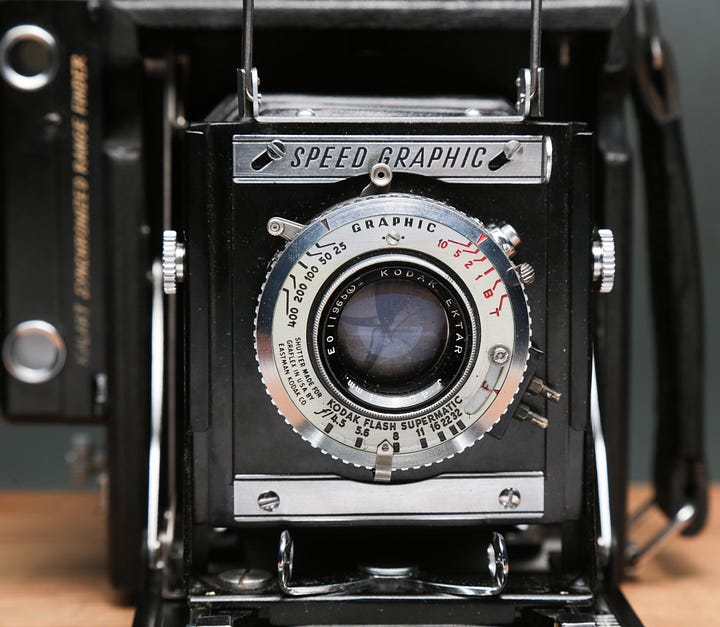
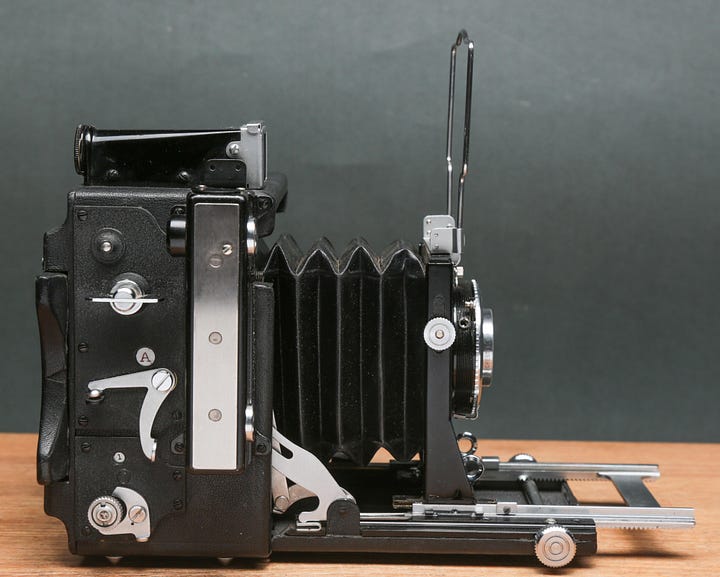
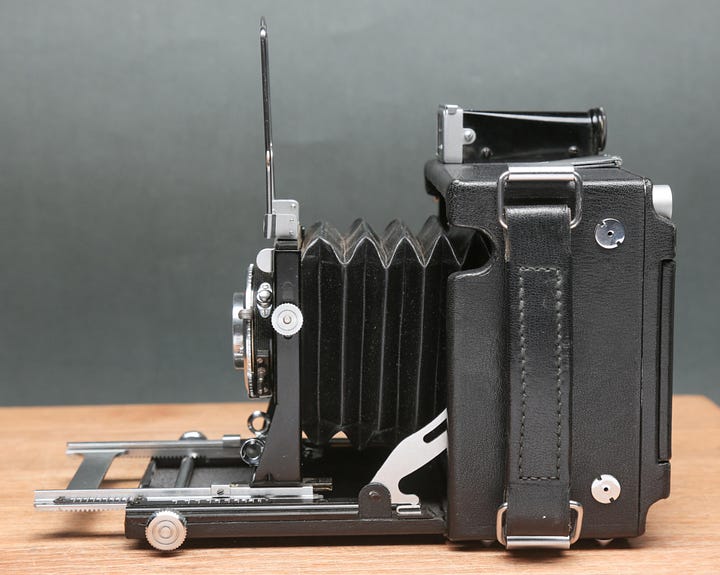
The Speed Graphic cameras were built for professional shooters. They were ubiquitous in the news industry for over forty years. If you have ever watched a B&W film, where news photographers are harassing a local politician, sticking a big camera in his face and blowing a huge flash-bulb, it was certainly a Speed Graphic.
The Speed Graphic was also a primary camera for war photographers during WWII. Joe Rosenthal, who captured the most iconic war picture of five Marines and a Navy Corpsman raising the American flag over Imo Jima, took that shot with a Graflex Speed Graphic. The story of Joe getting that picture is worth reading.
This Speed Graphic Miniature, was set up to use plate film. In the top shot of the two pictures above, you can see wooden frames that held two negatives each (one on each side). Most Graflex cameras had adapters for roll film and non-standard plate film sizes, my camera is set to use only plate film.
If you look at the wooden film holders above, you’ll notice that there are metal sheets on the top and bottom of the frames. These sheets protected the unexposed negatives. There are small “handles” to grip the sheet and pull them out from the frame, you did this ONLY when the frame was properly seated in the camera.
In the bottom shot, you see the back of the camera where the film plates would go. What is not really noticed, unless you understand the history of plate film cameras (and Graflex cameras specifically), is the new film holding system called the “Graflok”. The Graflok system allowed for a much faster changing of film and a more positive hold of the film plate (making sure that there was no light-leakage to spoil your shot).
Here are two shots from different cameras, showing one with the Graflok system and one with the traditional system.

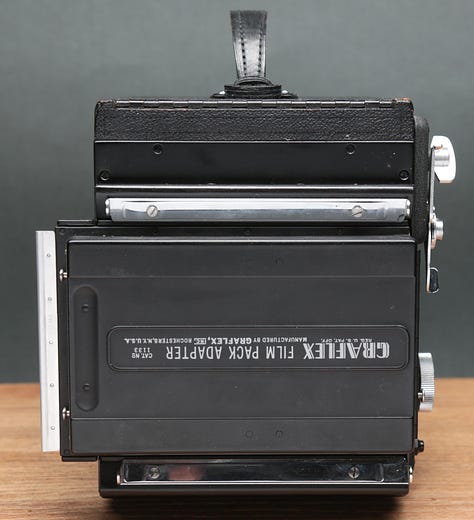
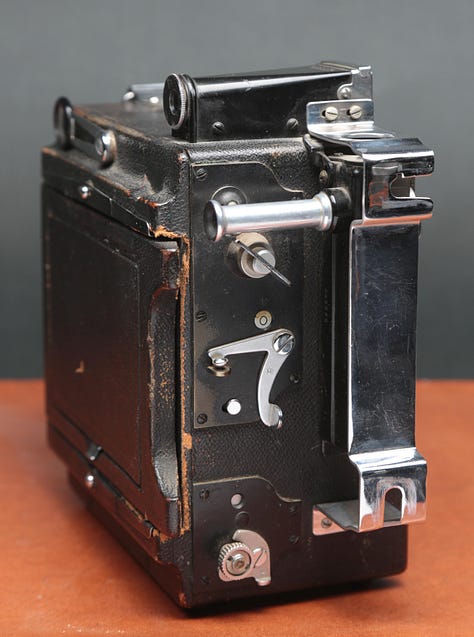
The two shots on the left show the old style system. The two metal clips would have a lever that allowed for them to rotate open so that you could take the film holder off the back of the camera. To place a new plate, you would need to put another film holder on the back and slide the lever back into the closed position. It took time, that was this system’s biggest drawback. On the right, you see the Graflok system. There is a wooden back that is held tight to the body of the camera by metal springs. You will notice two wooden points sticking out (top & bottom), those are for the photographer to open the back with his thumb. There would be a small opening into which you could slide your film holder. The tension would hold the film holder in place and keep the light seal tight. It was a faster system. I haven’t even gotten to the process for loading and unloading the film from the film holders…
Too damned long, maybe some other day.
A Graflex Speed Graphic was on my bucket list. I will grant you that this is not a full-sized Speed Graphic, but I am happy enough to have this one, in the near perfect condition that it’s in, that I am not pining for another one.
At least until the next one comes along.

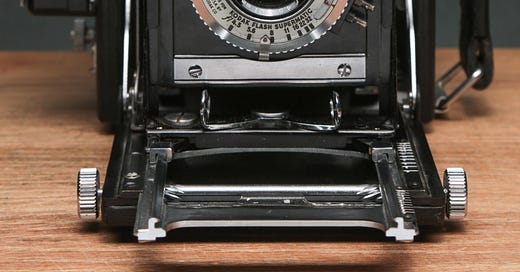



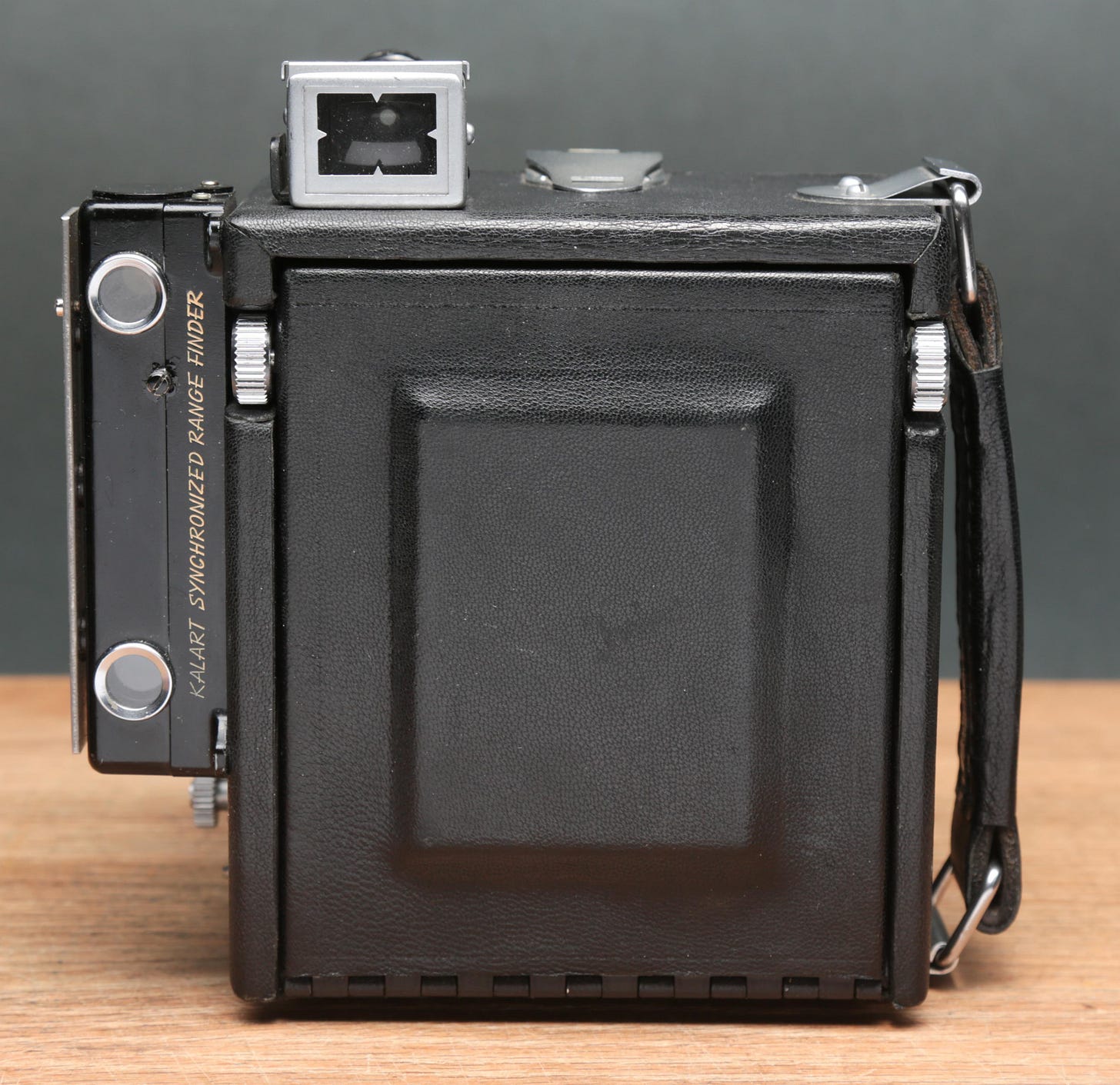
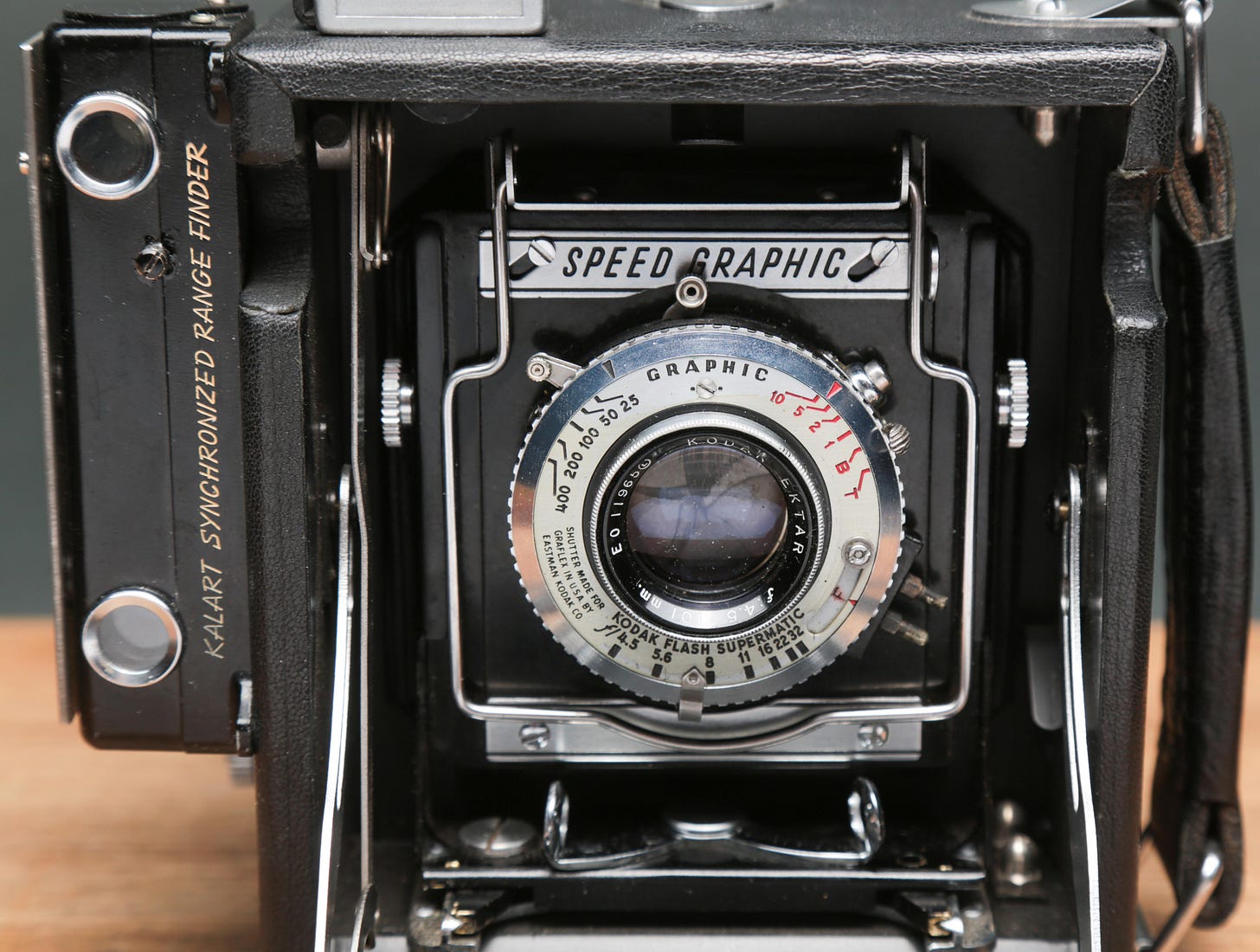
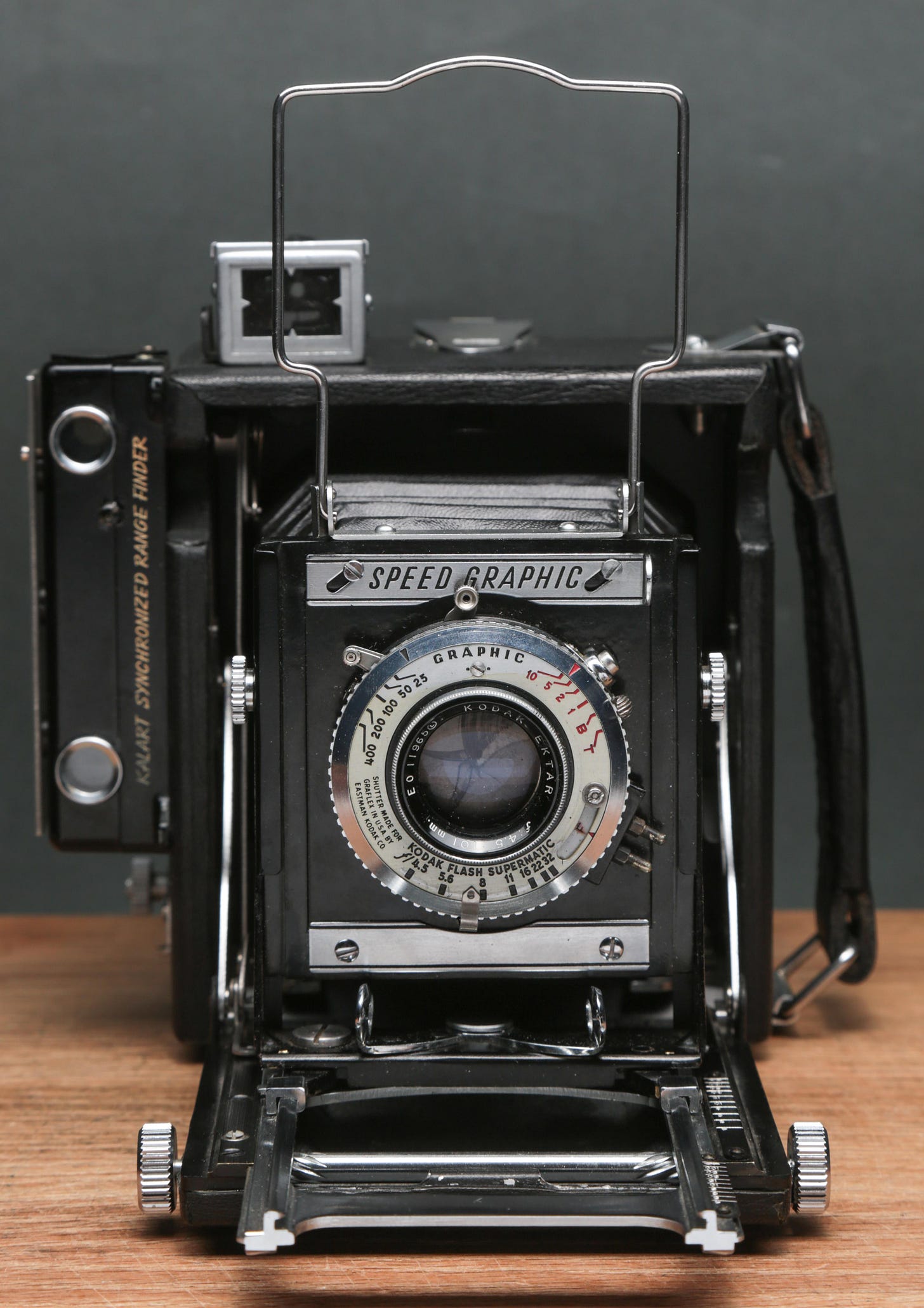
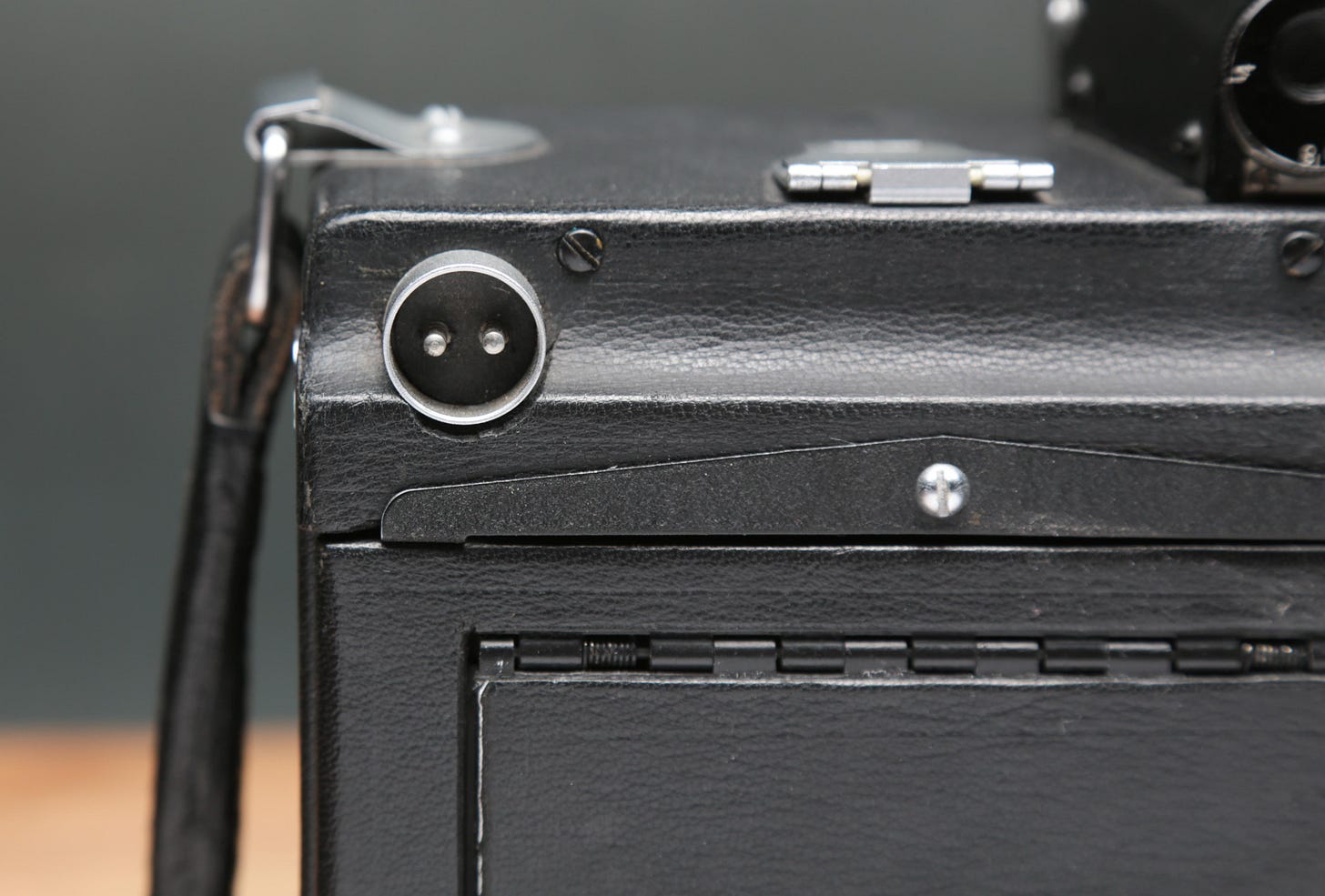
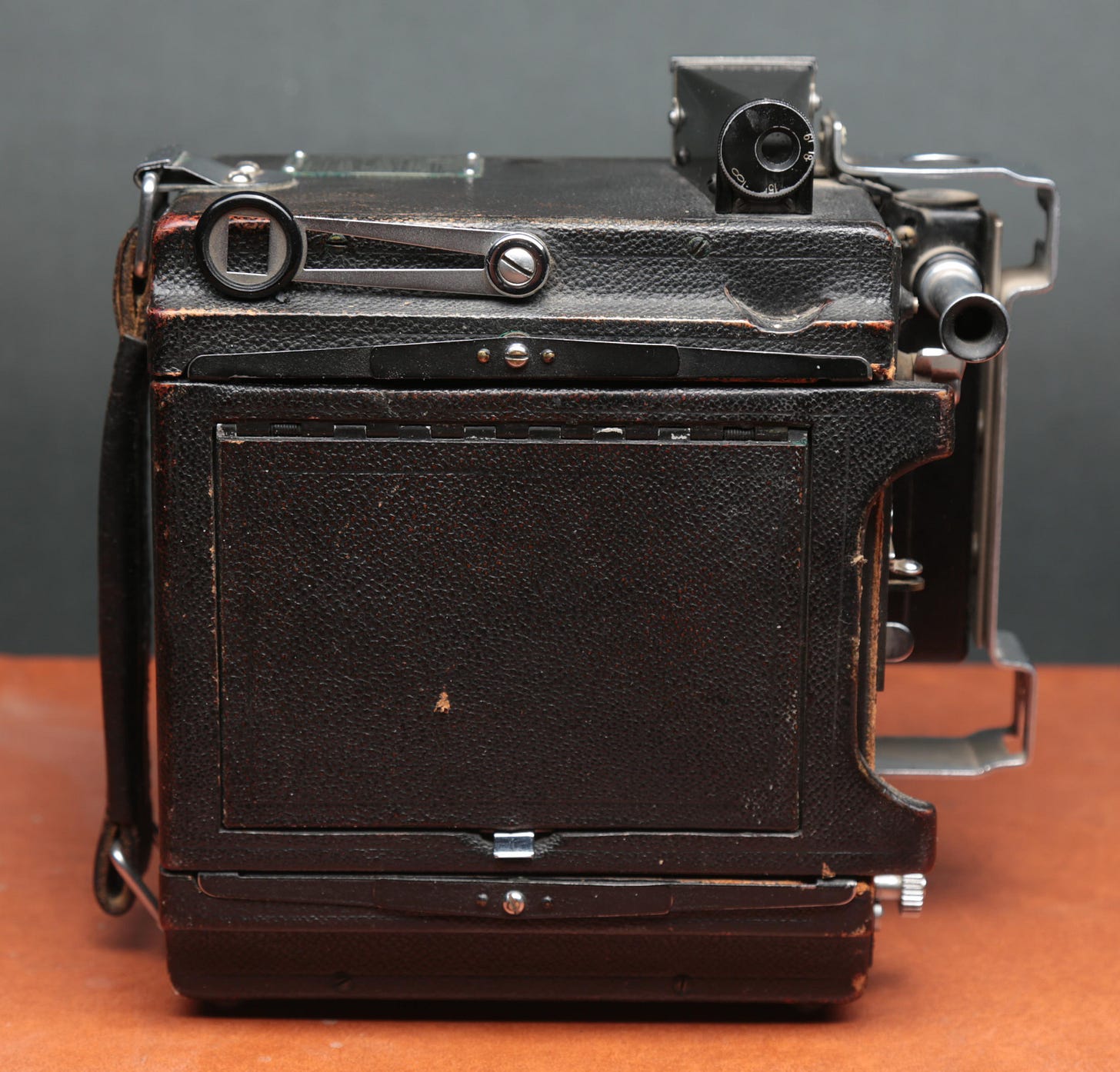

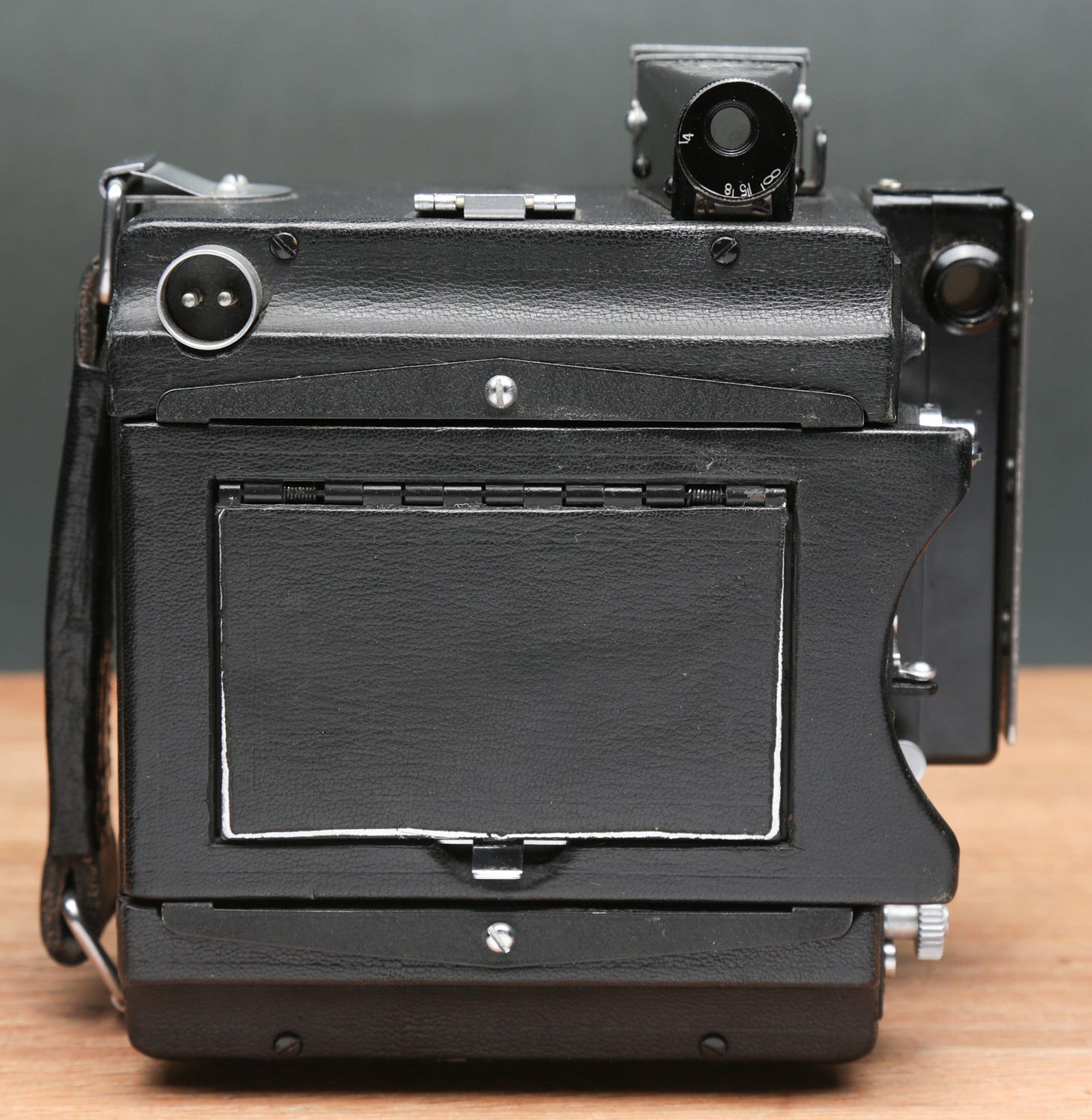
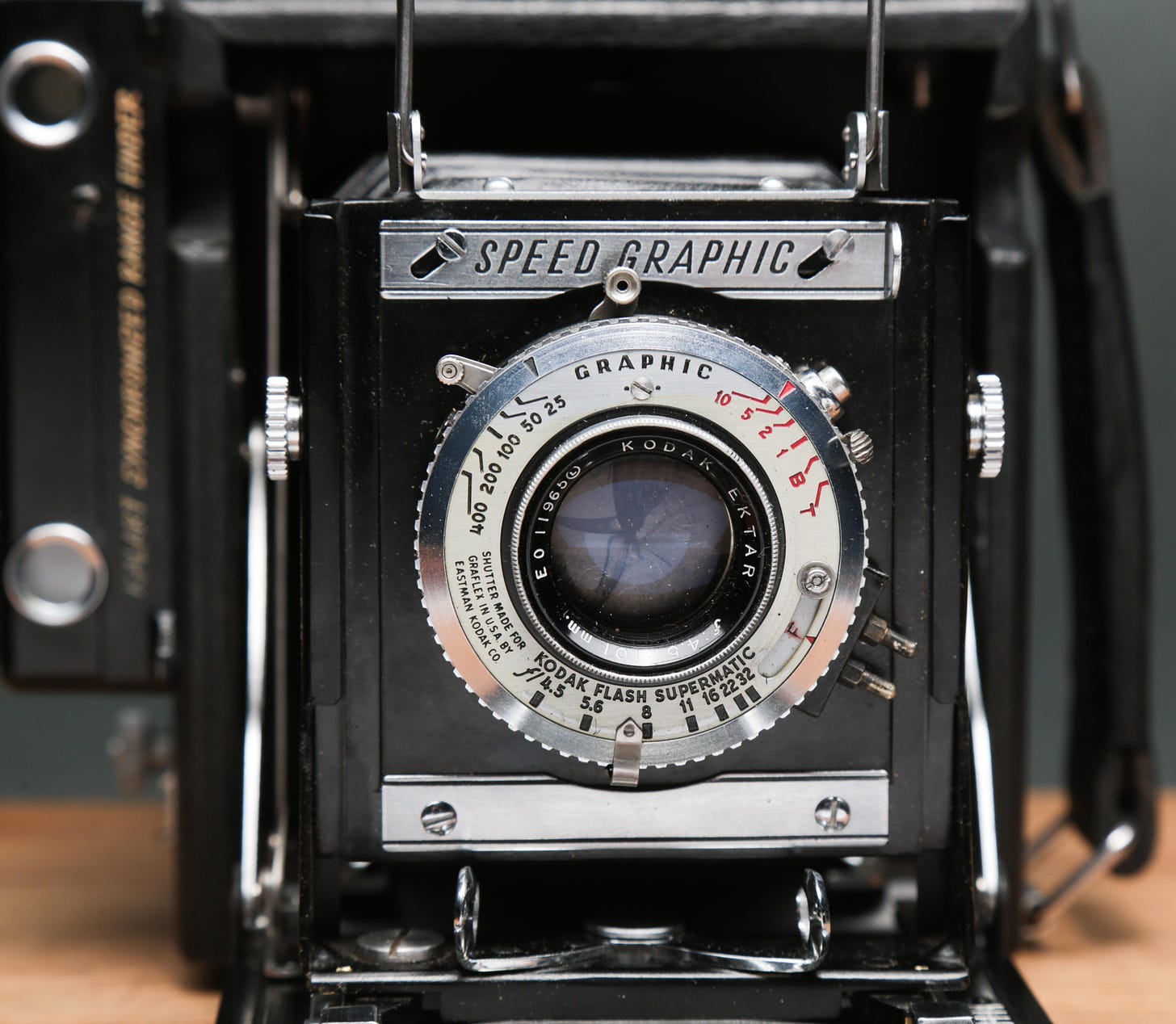
How - noticing my comment here & everywhere else I’ve backtracked & left a trail since the ‘early ayem - is ‘gone or never ‘arrived ! Regardless ! I welcomed you to the ‘Black Changing Bag Society of TouchyFeely Fingers in Total Darkness .. We are MANY ! 🦎🏴☠️ & ‘Lo ! There Was No Light ! Rumour has it that Mormonism as we ‘know it today sprung from inside a bag ! With ‘magic stones in it !
Well, if my ETRSi caught your imagination, this one has mine! What a beauty.. I've often looked at the smaller (6x7, 6x9 rollfilm) Linhoff Technikas with a yearning eye, but hadn't realised there was a similar type of 'Graphic .... one day, maybe 🤓